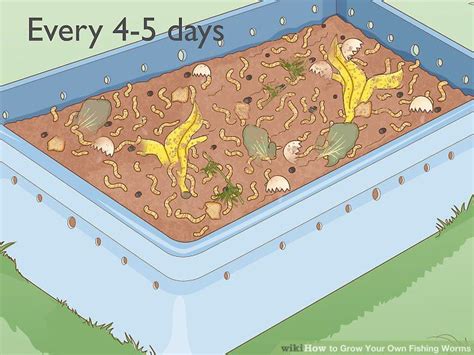Stop Buying Bait: Create Your Own Worm Paradise
Tired of shelling out cash for worms every fishing trip? Want the freshest, juiciest bait at your fingertips? Then it's time to ditch the bait shop and create your very own worm paradise! This comprehensive guide will walk you through setting up and maintaining a thriving worm farm, ensuring you always have a plentiful supply of wriggly delights.
Why Raise Your Own Worms?
Before we dive into the specifics, let's highlight the numerous advantages of cultivating your own worms:
- Cost Savings: The initial investment in setting up a worm bin is far less than repeatedly buying worms. Over time, you'll save a significant amount of money.
- Consistent Supply: You'll always have access to fresh, high-quality worms, ready for your next fishing adventure. No more frantic last-minute bait runs!
- Sustainable Practice: Worm composting is an environmentally friendly way to dispose of organic waste while producing valuable fishing bait. It's a win-win!
- Superior Bait: Worms raised in your own bin are generally healthier and more active than store-bought ones, leading to better fishing results.
What You'll Need to Start Your Worm Farm
Creating a thriving worm farm is surprisingly simple. Here's what you'll need:
- Worm Bin: You can purchase a ready-made worm bin, or build your own using readily available materials like plastic storage bins. Ensure it has adequate drainage and ventilation.
- Worms: Red wigglers (Eisenia fetida) are the most popular choice for composting and fishing bait due to their voracious appetites and tolerance for various conditions. Start with approximately 1,000 worms for a decent-sized bin. You can typically purchase these online or from local bait shops.
- Bedding: Worms need a moist, comfortable environment. Shredded newspaper, cardboard, and coconut coir are excellent bedding materials. Avoid glossy or colored paper.
- Food Scraps: Worms consume a variety of organic materials, including fruit and vegetable scraps, coffee grounds, and tea bags. Avoid meat, dairy, oily foods, and citrus fruits.
Setting Up Your Worm Bin: A Step-by-Step Guide
- Prepare the Bedding: Thoroughly moisten your chosen bedding material. It should be damp, like a wrung-out sponge.
- Introduce the Worms: Gently add your worms to the moistened bedding.
- Layer the Food: Add a thin layer of food scraps on top of the bedding. Avoid overloading the bin.
- Maintain Moisture: Regularly check the moisture level of the bedding. It should remain consistently damp.
- Monitor Temperature: Worms thrive in temperatures between 55°F and 77°F (13°C and 25°C).
Maintaining Your Worm Paradise: Tips for Success
- Proper Feeding: Feed your worms small amounts of food regularly. Overfeeding can lead to foul odors and attract pests.
- Moisture Control: Keep the bedding consistently moist but not soggy. Excessive moisture can lead to anaerobic conditions and harm your worms.
- Ventilation: Ensure adequate airflow to prevent the buildup of harmful gases.
- Harvesting: You can harvest worms as needed. A simple method is to use a flashlight to attract them to one side of the bin and then gently scoop them out.
H2: How often should I feed my worms?
Feed your worms small amounts of food scraps daily or every other day, depending on the size of your bin and the number of worms. Observe your bin; if food scraps are disappearing quickly, you can increase the amount. If food remains uneaten, reduce the amount.
H2: What happens if my worm bin smells bad?
A foul odor usually indicates a problem with moisture or overfeeding. Check the moisture level and ensure you aren't feeding your worms too much food. If the smell persists, aerate the bin and consider removing some of the decaying material.
H2: How many worms do I need for a good supply of fishing bait?
The number of worms you need depends on your fishing habits. Starting with 1,000 red wigglers in a medium-sized bin is a good starting point for most anglers. You can adjust the size of your bin and the number of worms based on your needs.
H2: Can I use other types of worms for fishing bait?
While red wigglers are the most popular choice for worm composting and fishing bait, other worm species might also work. However, their suitability for composting and ease of maintenance may differ.
Conclusion: Reel in the Rewards
Creating your own worm farm is a rewarding experience that provides numerous benefits. By following these guidelines, you can ensure a constant supply of fresh, high-quality fishing bait, saving money, reducing waste, and embracing a sustainable lifestyle. So, ditch the bait shop and start your own worm paradise today! You’ll be amazed at the results.

